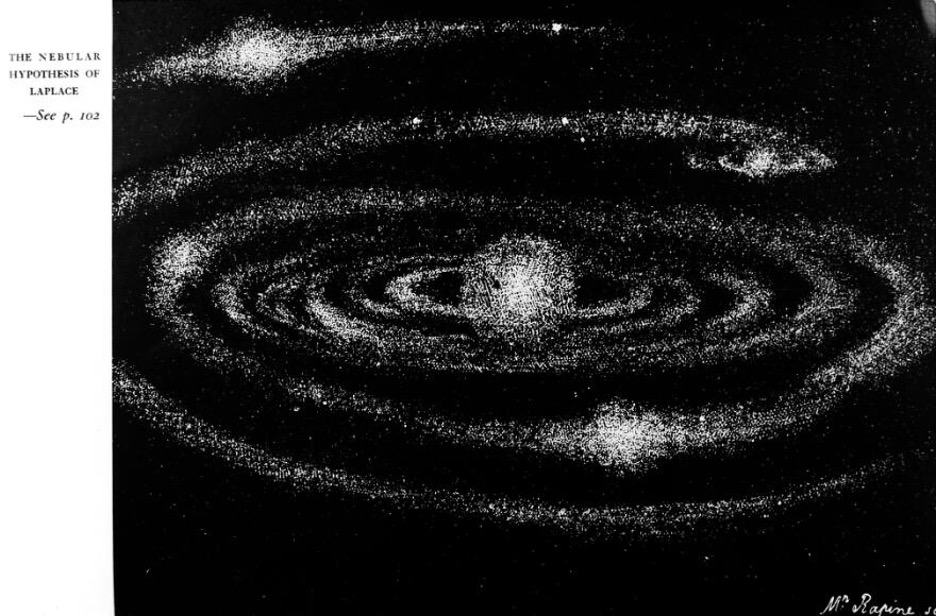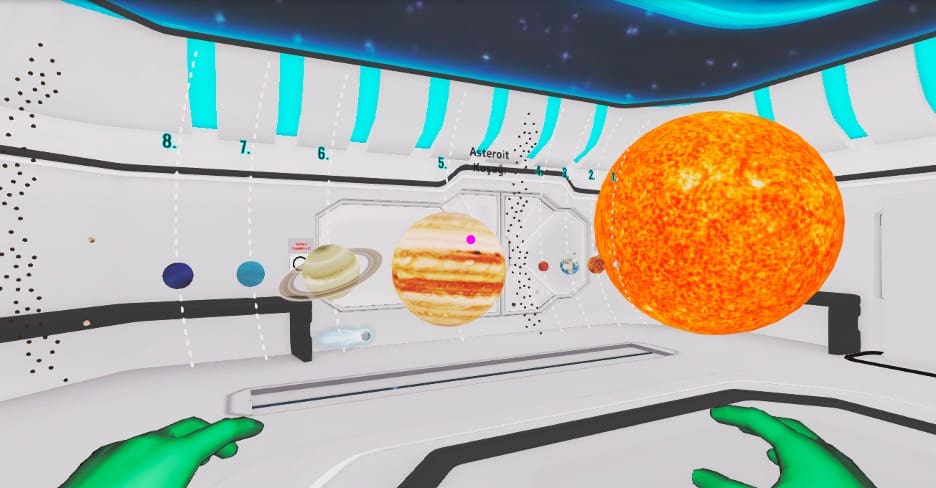The structure and formation of the Universe and Solar System have sparked people's interest since ancient civilizations. For this reason, they developed several observation and measurement techniques over time, as well as conducted substantial studies and observations.
As a result of these studies, numerous hypotheses for the Solar System's origin and evolution have been presented. For the origin of the Solar System (as well as other planetary systems), the nebular hypothesis is the most widely supported and accepted.
A system that accelerates by rotating with an external effect and gains more gas mass as it rotates creates a disk around the center of accretion. While the central region contracts and condenses to form the Sun, the planets were formed by collisions and mergers at different distances from the center with matter drifted by the radiation pressure of the protosun.

Any model to explain the formation of the Solar System supports some observational features. These are:
- The orbits of all planets are roughly in the same plane.
- Planetary orbits are ellipses close to circles.
- The compositions of the planets differ from each other and vary with their distance from the Sun: compact, metal-rich and small planets are in the inner part of the Solar System; gas giants and hydrogen-rich planets are located in the outer part of the Solar System.
- Planets move from west to east. The Sun also rotates in the same direction. (Venus and Uranus are special because of their tilt. Their actual rotations are essentially the same as the entire system.)
Such observational features support the nebular hypothesis of the formation of the Solar System.
While the Sun was forming, the 8 most prominent objects formed in the disk are respectively; Mercury, Venus, Earth, Mars, Jupiter, Saturn, Uranus and Neptune. The first 4 of these planets are called terrestrial planets, while the last 4 planets are called gas giants.

For an object to be classified as a planet;
- It must orbit a star (in our cosmic neighborhood, the Sun).
- It must be big enough to have enough gravity to force it into a spherical shape.
- It must be big enough that its gravity cleared away any other objects of similar size near its orbit around the Sun. [1]
Among these basic features, the relatively massive objects that orbit their star and that managed to become almost spherical but could not clear their orbit are called dwarf planets. There are 5 dwarf planets in the Solar System. According to their distance from the Sun, their names are Ceres, Pluto, Haumea, Makemake and Eris, respectively. Of these, Ceres is located in the asteroid belt between Mars and Jupiter, while the other 4 dwarf planets Pluto, Haumea, Makemake and Eris are located in the Kuiper Belt beyond Neptune.
ThroughVRLab Academy, students can learnthe structure and formation of the Solar System with a virtual lab in VRLab Academy. They can run the same simulation a number of times, get new experiences and acquire new knowledge.
Take a look atall experiments at VRLab Academy andenhance your teaching power with us.
References:
[1]https://solarsystem.nasa.gov/planets/in-depth/
Credit:
Astronomy photo: nebular hypothesis of Laplace. Wellcome Collection. Attribution 4.0 International (CC BY 4.0)